
There aren't many aromas as comforting as the smell of fresh-baked bread, but a roasted chicken or turkey comes pretty close. A perfectly roasted bird, with its richly flavors and crisp, golden skin, is as appealing a meal as any cook can produce. Managing the oven so your bird is golden at the same time it's perfectly cooked is a bit of a balancing act, and it's easiest in a convection oven.
How Convection Works
One of the limitations of conventional roasting is that air isn't a very good conductor of heat. You can reach into an oven to test a cake without hurting yourself, yet most people can't handle dishes straight from the heat-drying cycle of their dishwasher despite their lower temperature. Convection ovens address this by using a fan to blow hot air across the food as it cooks. The moving air transfers heat more effectively -- think of a sweltering summer wind -- and results in faster, more even cooking.
Browning
One of the most noticeable effects of convection as opposed to normal ovens is browning. Convection raises the surface temperature of your bird much more effectively than conventional ovens, because it whisks away the steam that rises from the skin and keeps it cool. The fat under your chicken or turkey's skin renders more quickly and consistently, helping crisp the skin, while the improved heat transfer speeds the browning reaction. Browning occurs when the amino acids in your bird's proteins are disrupted by the heat, then re-form into more complex molecules. This creates a range of savory flavors as well as changing the skin's color, which is why the roasted skin tastes so good.
Time and Doneness
Despite the slight drying effect of the fan-driven air, convection-roasted poultry is usually juicier than conventionally roasted birds. That's because of the quick, even heating. Most manufacturers, and most cookbooks, advise shortening your cooking time by 15 to 25 percent when you're using convection. The difference is most noticeable with large items, such as a turkey or a big roasting chicken, where switching to convection save you up to an hour. The shorter cooking time means less evaporation, and a moister, more flavorful bird.
Some Tips
Although convection ovens provide more even heating, there's often a hot spot directly in front of the fan. Avoid putting your turkey there, or use a folded sheet of foil to deflect the heated air from the bird. Foil can also be useful for covering the wings and the tips of the drumsticks, if they're browning too rapidly. If you tent the whole bird with foil to slow the browning, you'll need to keep it in place with skewers or toothpicks. Otherwise, the fan will just blow it away. Your bird is done when its temperature reaches 165 degrees Fahrenheit in the thickest part of the thigh. Let it rest for at least 20 to 30 minutes before you carve it, for the best results.
Related Articles
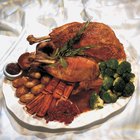
Why Does it Take Longer to Cook a ...

Can I Cook Duck in Low Temperatures to ...
Difference Between Cooking in a Regular ...

What Makes the Chicken Skin Crispy When ...
Convection Broiling Vs. Convection ...

Can You Roast Whole Frying Chickens?

How to Cook a Goose on the Grill
Roast Chicken in Enameled Cast Iron

How to Cook Prime Rib Using an Oven ...
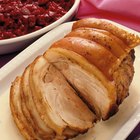
Does Cooking a Pork Roast Frozen Help ...

The Effects of Inhaling Air Dusters

Should a Pheasant Be Cooked With or ...
How Long to Thaw a Frozen Turkey

The Best Ways to Make a Baked Moist and ...
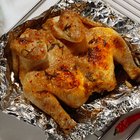
How to Get a Crispy Crust on Roasted ...

How to Use Reynolds Oven Bags
How to Cook in Tabletop Convection Ovens
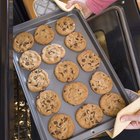
Advantages & Disadvantages of Dry ...
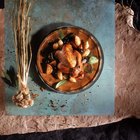
The Best Way to Cook Cornish Hens
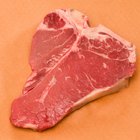
How to Broil Strip Steak
References
- On Food and Cooking: The Science and Lore of the Kitchen; Harold McGee
- USDA Food Safety and Inspection Service: Turkey from Farm to Table
Writer Bio
Fred Decker is a trained chef and prolific freelance writer. In previous careers, he sold insurance and mutual funds, and was a longtime retailer. He was educated at Memorial University of Newfoundland and the Northern Alberta Institute of Technology. His articles have appeared on numerous home and garden sites including GoneOutdoors, TheNest and eHow.
Photo Credits
David De Lossy/Photodisc/Getty Images